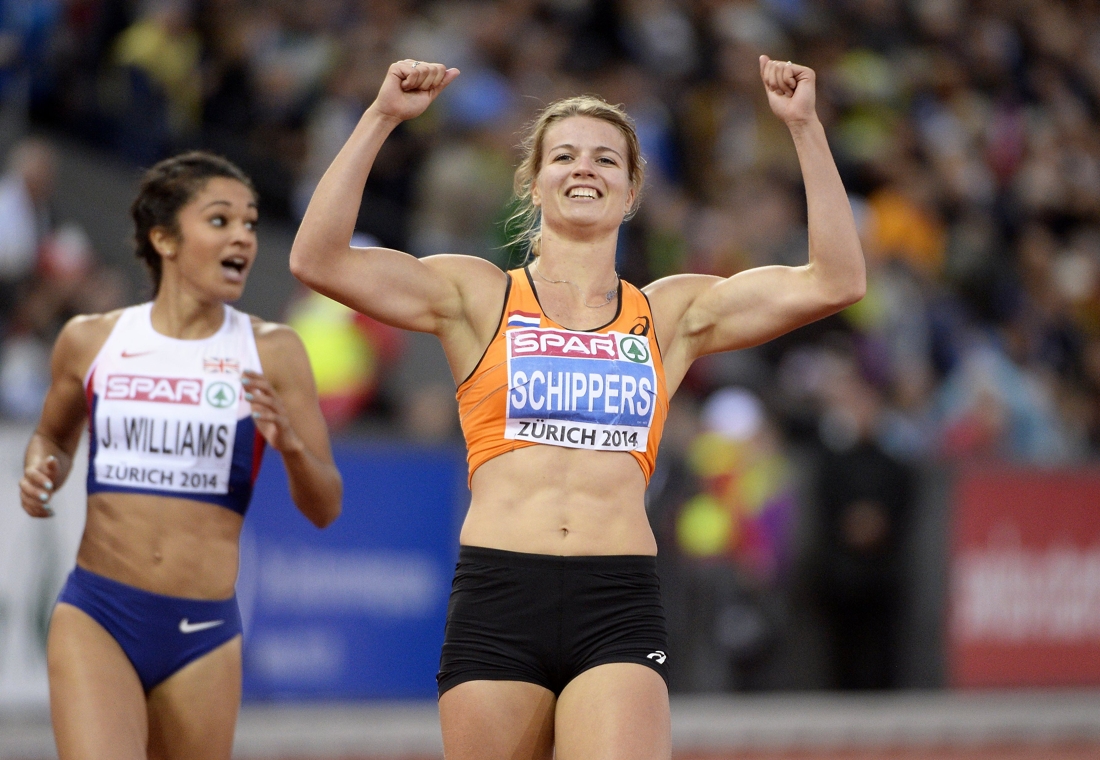

Namibian (formerly South-West Africa) Frankie Fredericks became the first man of non-West African heritage to achieve the feat in 1991 and in 2003 Australia's Patrick Johnson (an Indigenous Australian with Irish heritage) became the first sub-10-second runner without an African background. Only male sprinters have beaten the 100 m 10-second barrier, the vast majority of them being of West African descent. When the placing of the athletes is not obvious, a photo finish is used to distinguish which runner was first to cross the line. There is therefore no requirement for the entire body to cross the finish line. The winner, by IAAF Competition Rules, is determined by the first athlete with their torso (not including limbs, head, or neck) over the nearer edge of the finish line. Pacing and running tactics do not play a significant role in the 100 m, as success in the event depends more on pure athletic qualities and technique. Maintaining that top speed for as long as possible is a primary focus of training for the 100 m. Runners usually reach their top speed just past the halfway point of the race and progressively decelerate to the finish. Justin Gatlin commented, "Just a flinch or a leg cramp could cost you a year's worth of work." The rule had a dramatic impact at the 2011 World Championships, when current world record holder Usain Bolt was disqualified. This proposal was met with objections when first raised in 2005, on the grounds that it would not leave any room for innocent mistakes. To avoid such abuse and to improve spectator enjoyment, the IAAF implemented a further change in the 2010 season – a false starting athlete now receives immediate disqualification. This rule led to some sprinters deliberately false-starting to gain a psychological advantage: an individual with a slower reaction time might false-start, forcing the faster starters to wait and be sure of hearing the gun for the subsequent start, thereby losing some of their advantage. The next iteration of the rule, introduced in February 2003, meant that one false start was allowed among the field, but anyone responsible for a subsequent false start was disqualified.
However, this rule allowed some major races to be restarted so many times that the sprinters started to lose focus. The 0.2-second interval accounts for the sum of the time it takes for the sound of the starter's pistol to reach the runners' ears, and the time they take to react to it.įor many years a sprinter was disqualified if responsible for two false starts individually. A reaction time less than 0.1 s is considered a false start. Īt high level meets, the time between the gun and first kick against the starting block is measured electronically, via sensors built in the gun and the blocks. Male sprinters await the starter's instructionsĪt the start, some athletes play psychological games such as trying to be last to the starting blocks. US women have also dominated the event, winning 9 out of 21 times. US athletes have won the men's Olympic 100 metres title more times than any other country, 16 out of the 28 times that it has been run. The current men's world record is 9.58 seconds, set by Jamaica's Usain Bolt in 2009, while the women's world record of 10.49 seconds set by American Florence Griffith-Joyner in 1988 remains unbroken. The 10-second barrier has historically been a barometer of fast men's performances, while the best female sprinters take eleven seconds or less to complete the race.

Their speed then slows towards the finish line. Sprinters typically reach top speed after somewhere between 50 and 60 m. A race-official then fires the starter's pistol to signal the race beginning and the sprinters stride forwards from the blocks. The following instruction, to adopt the 'set' position, allows them to adopt a more efficient starting posture and isometrically preload their muscles: this will help them to start faster. The runners move to the starting blocks when they hear the 'on your marks' instruction. There are three instructions given to the runners immediately before and at the beginning of the race: "on your marks," "set," and the firing of the starter's pistol. On an outdoor 400-metre running track, the 100 m is held on the home straight, with the start usually being set on an extension to make it a straight-line race. Fred Kerley and Shelly-Ann Fraser-Pryce are the reigning world champions Marcell Jacobs and Elaine Thompson-Herah are the men's and women's Olympic champions. The reigning 100 m Olympic or world champion is often named "the fastest man or woman in the world". Women's 100 m Final – 2015 World Championships, won by Jamaican sprinter Shelly-Ann Fraser-Pryce.


 0 kommentar(er)
0 kommentar(er)
